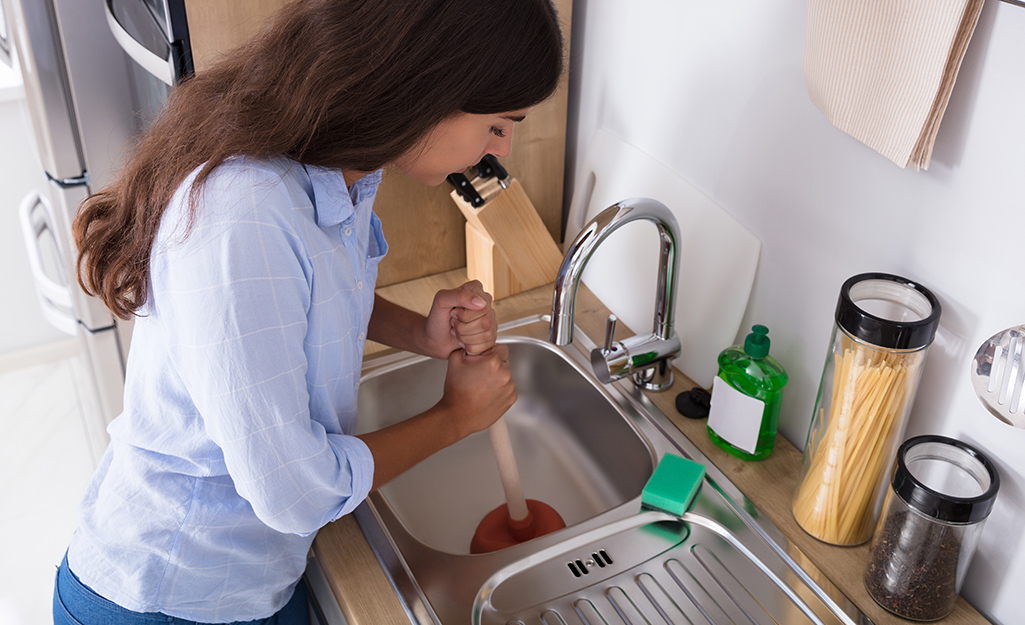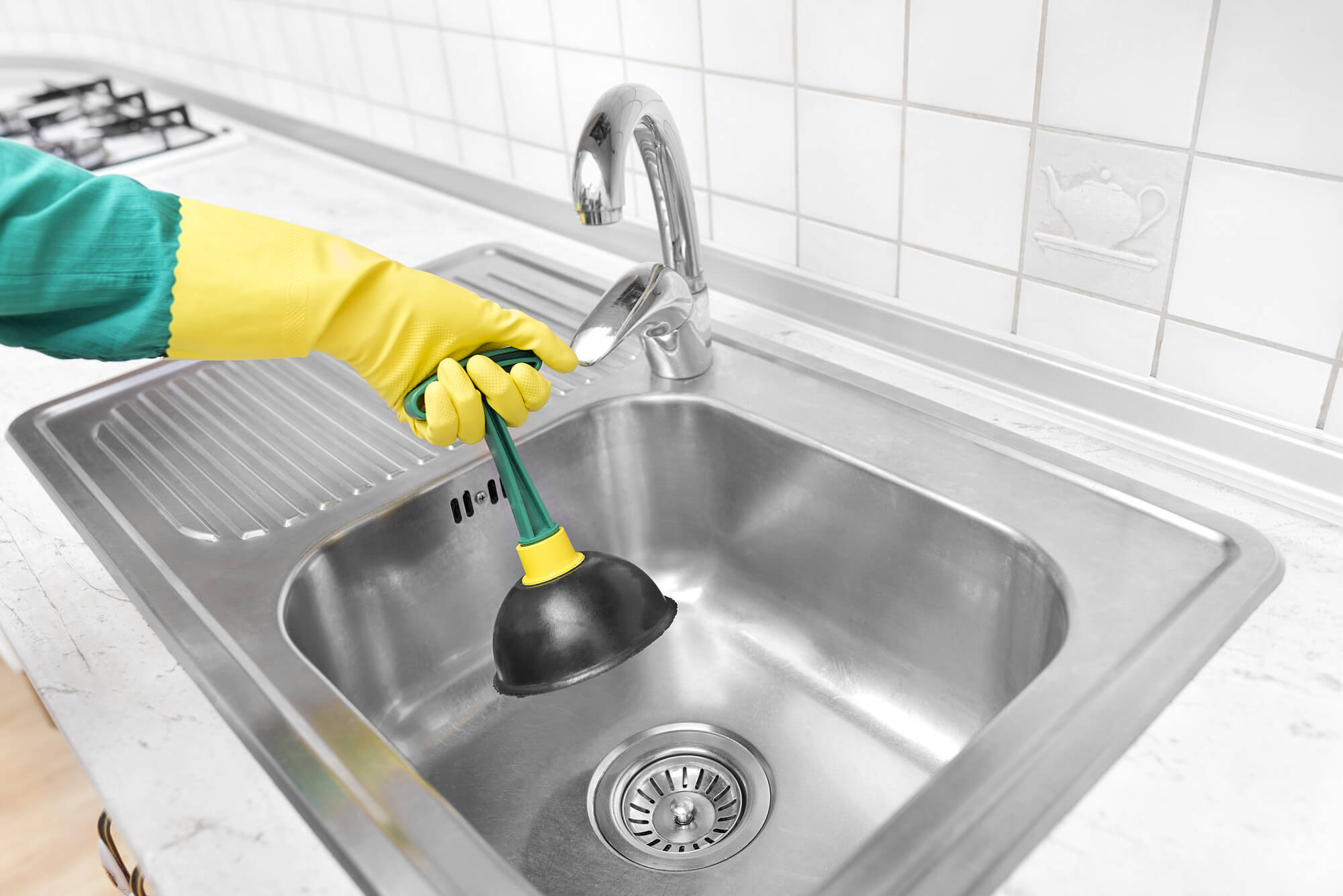Detailed Instructions To Address A Slow-Draining Sink
Detailed Instructions To Address A Slow-Draining Sink
Blog Article
Just how do you really feel in regards to 7 Ways To Fix A Slow-Draining Sink Before You Call A Plumber?

Intro
We have actually all existed: You're brushing your teeth or washing your hands, and you notice the water pooling in the sink. Instead of rapidly swirling down the tubes, it remains, turning your once-refreshing morning regimen right into a mini swamp scene. A slow-draining sink isn't just aggravating; it's commonly a sign of larger pipes problems prowling underneath the surface area. Fortunately is that the majority of slow-draining sinks can be repaired with a little expertise, a couple of standard tools, and some perseverance. Prepared to tackle this task head-on? Let's roll up our sleeves and dive right in.
Comprehending the Sources Of a Slow-Draining Sink
Prior to you start poking around in your pipes, it helps to know what could be creating the stagnation. Comprehending the source makes it simpler to choose the right solution.
Devices and Materials You'll Require
The right tools make all the difference. The good news is, you will not need a totally stocked plumbing's van to get the job done.
Step-by-Step Overview to Repairing a Slow-Draining Sink
Currently, allow's enter into the nitty-gritty. This detailed procedure will certainly assist you through basic strategies to recover your sink's drainage.
Step 1: Remove and Clean the Stopper
Frequently, the stopper (that tiny plug you push down to obstruct water) is the first wrongdoer. Remove it thoroughly and wipe any hair or substance caught around its base. Wash it extensively prior to placing it back in position.
Action 2: Make Use Of a Plunger to Remove Debris
Got that plunger ready? Position it over the drain and give it a few company pumps. The concept is to produce suction that can loosen up any obstruction. If you see bits of particles floating up, you're on the right track.
Step 3: Try a Drainpipe Snake or Cord Hanger
If the plunger does not suffice, it's time to draw out the drainpipe snake. Gently feed it right into the drain and spin as you go. You could really feel some resistance-- that's likely the clog. Maintain turning and pulling until you get rid of the obstruction. If you do not have a drain serpent, a straightened cable wall mount can work in a pinch.
Tip 4: Apply a DIY Drainpipe Cleanser
A natural cleaner made from cooking soft drink and vinegar can break down residual grime. Put half a mug of baking soft drink right into the drain, adhered to by half a mug of vinegar. Allow it fizz for around 15 minutes, then flush with warm water. This chemical reaction often does marvels for small obstructions.
Step 5: Reconstruct and Check the Sink
Put every little thing back with each other and run the faucet. Does the water now swirl away at a commendable rate? If yes, provide on your own a pat on the back. Otherwise, don't anguish-- there are still a few more dress up your sleeve.
Vital Tools for DIY Services
A bettor is your go-to beginning factor. A small, sink-sized bettor produces suction that can remove small blockages. For more relentless obstructions, a drainpipe serpent (occasionally called a plumber's auger) functions wonders. A set of gloves, a flashlight, and possibly a pair of safety goggles are also useful.
Advised Cleansing Solutions
Moderate meal soap and warm water can help break down oily accumulation. A mixture of baking soft drink and vinegar is a time-tested natural home remedy, and enzymatic cleaners supply an even more green strategy. Keep chemical drain cleaners as a last resort, as they can be extreme on your pipelines.
Usual Culprits Behind Slow Drainage
So, what's clogging points up? Generally, it's a mixture of everyday debris-- assume hair, soap residue, tooth paste residue, and remaining food bits. In time, these tiny bits gather and hold on to the pipe wall surfaces, slowly narrowing the passage and making it harder for water to travel through. In many cases, mineral deposits from tough water can also include in the gunk, developing the perfect storm for stubborn clogs.
When is it Time to Do Something About It?
If you discover the water draining pipes slower than typical, it's a good concept to intervene quicker as opposed to later. Waiting too long could cause complete obstructions, undesirable odors, or perhaps pipe damage. If the water takes more than a couple of secs to remove after shutting off the faucet, consider it a red flag and prepare yourself to put on your DIY hat.
Safety And Security First: Precautions and Preparations
Before you launch into unclogging mode, think about safety. You're taking care of potentially filthy water and particles, so slip on a set of handwear covers. If you're utilizing chemical cleaners, guarantee the area is well-ventilated and adhere to the guidelines on the label.
Protective Equipment and Work Space Setup
Put down some old towels or dustcloths around the sink location to catch dashes. Eliminate any kind of products that might get in your way, like soap dispensers or toothbrush holders. Make sure you have great lights-- get a flashlight if required.
Different Techniques for Stubborn Clogs
Not all blockages are produced equal. If your sink still declines to comply, consider these different solutions.
Baking Soda and Vinegar Technique
We already discussed this, but it deserves keeping in mind again. This mild, environmentally friendly approach is more secure than chemical cleaners and usually quite efficient.
Chemical Drainpipe Cleaners
Enzyme-based cleaners use natural microorganisms to digest organic matter. They're a superb choice if you're wanting to prevent extreme chemicals. Just remember, they might take a bit longer to work their magic.
Chemical Drainpipe Cleaning Company: Advantages And Disadvantages
Chemical cleaners can blast via hard blockages fast, yet they're not without disadvantages. They can generate warmth and fumes, damage pipelines if used excessively, and posture environmental risks. Utilize them sparingly, and always adhere to the directions carefully.
Preventive Measures to Maintain Your Sink Flowing
Prevention is the most effective cure. By adopting a couple of basic habits, you can keep your sink from slowing down to begin with.
Regular Cleaning Routines
Wipe down the sink basin and component area regularly. Eliminate hair or food bits before they have a chance to wash down the drainpipe.
Avoiding Unsafe Substances Down the Drain
Think twice before discarding coffee premises, oil, or fibrous vegetable scraps down the sink. These wrongdoers cling to pipeline walls, developing clogs gradually.
Regular Maintenance Checks
Schedule a quick month-to-month inspection. Run warm water with the sink for a few mins, focusing on the flow. If it appears sluggish, act quickly before it becomes a full-blown obstruction.
When to Call an Expert Plumbing
Occasionally, no matter exactly how difficult you attempt, that clog just won't budge. That's when it's time to generate the pros.
Indicators That Suggest a More Major Concern
If your sink drains pipes slowly regardless of several attempts, or if you discover water backing up in other components (like your shower or bathroom), you may have a more significant plumbing issue hiding much deeper in the system.
Stabilizing Do It Yourself Efforts with Professional Assistance
While DIY can save you money and offer a sense of accomplishment, there's no pity in calling a professional. An expert plumbing professional can examine your entire plumbing arrangement, ensuring there's no underlying damages or long-lasting problem that can cost you much more down the road.
Contrasting Costs and Long-Term Solutions
Prior to choosing, think about the big picture. An economical, quick fix may solve the issue momentarily, however buying a more long-term remedy could save you cash and stress in the future.
Considering the Costs of DIY vs. Expert Fixes
DIY repairs typically set you back little greater than the price of a plunger or a bottle of baking soda. Professional services, on the other hand, featured a cost yet might protect against repetitive issues and expensive repair services later.
Purchasing Top Quality Fixtures and Upgrades
If your sink's design contributes to constant obstructions, it could be worth upgrading to higher-quality fixtures or modifying the plumbing format. Consider this a financial investment in your house's functionality and convenience.
Final thought
A slow-draining sink can feel like a small inflammation, but it's usually an indicator that your plumbing needs a little tender loving care. By recognizing the origin, employing the right tools and strategies, and committing to straightforward safety nets, you can maintain your sink streaming easily. And when all else stops working, never ever think twice to hire an expert-- your home's plumbing is worth the financial investment in care and upkeep.
Three Common Ways to Fix a Slow Drain
Baking Soda Method
Boil a full pot of water. Measure out cup of baking soda and pour it down the drain. Then take cup of the magical cleansing substance known as white vinegar and drop that down there too. Allow the mixture to fizz in the drain for five minutes as the vinegar and baking soda combine. Now dump in that whole pot of boiling water. This combination of cleaning substances should clear out anything that is causing your sink to drain slowly. If it doesn t...
Zip-It
If the baking soda method doesn t clear out your drain, it may be because a significant amount of hair and/or other debris has collected there and you need to remove it. Purchase a Zip-It tool at any home improvement or hardware store and insert it into your drain. It will catch any collected hair or debris that s blocking the flow of water. Pull it out. If it s got a big clump of hair, etc. on the end, you ve probably got your culprit.
Drain Cleaner
If these methods don t work, there is the standard drain cleaner that you can also buy in a hardware store or even your local grocery store. It s better if you can use a household solution, but these drain cleaners often work in a pinch. They re very simple to use. You generally just dump them in your drain and wait. If even this method is not effective, it may be time to call the plumber.
https://www.mrrooter.com/oneida/about-us/blog/2017/july/three-common-ways-to-fix-a-slow-drain/

Hopefully you liked our piece about Solved! How to Fix a Slow Sink Drain. Thanks so much for finding the time to browse our post. Kindly take the opportunity to promote this page if you enjoyed it. I enjoy your readership.
Visit Report this page